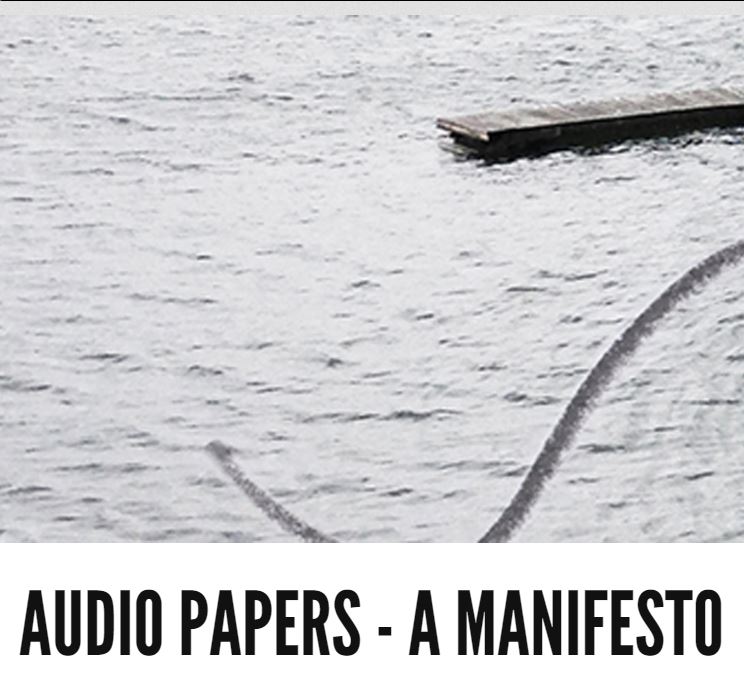Kristine Samson und Sanne Krogh Grogh propose a new academic format: The Audio Paper. In a manifesto just published days ago in Seismograf they propose this format as appropriate for academic presentations. According to Samson & Groth an audio paper should fulfill the following criteria:
1. The audio paper affords performative aesthetics.
2. The audio paper is idiosyncratic.
3. The audio paper is situated and partial.
4. The audio paper evokes affects and sensations.
5. The audio paper is multifocal; it assembles diverse and often heterogeneous voices.
6. The audio paper has multiple protagonists, narrators and material agencies.
7. The audio paper brings aesthetics and technology together in mediation.
8. The audio paper is a constituent part of broader ecologies.
With these strong postulates the audio paper clearly evades more narrow notions of a traditional academic presentation. Yet, if taken as a framework for all sorts of presentations in academia the traditional rigorous argument – generally modelled after an ideal mathematical proof or a juridical proof – would in turn be recognized as just a rather extremist and again a very idiosyncratic form of an academic presentation. Though, also for an audio paper, the presentation of academic research still remains the main goal:
Audio papers resemble the regular essay or the academic text in that they deal with a certain topic of interest, but presented in the form of an audio production. The audio paper is an extension of the written paper through its specific use of media, a sonic awareness of aesthetics and materiality, and creative approach towards communication. The audio paper is a performative format working together with an affective and elaborate understanding of language. It is an experiment embracing intellectual arguments and creative work, papers and performances, written scholarship and sonic aesthetics.
Hence, experimental forms for presenting auditory evidence regarding a certain issue become relevant references for authors and researchers who intend to produce an audio paper: the radio feature, the experimental soundpiece, soundscape compositions, narrative podcasts as well as experimental radio formats or even performance lectures or aural poetry can be references for an individual approach to an audio paper. By applying these already traditional forms of auditory presentations and boldly and finally proposing them to become part of the wide and weird range of academic presentation formats (e.g. peer reviews of mere abstracts, presentations via video, group presentations, poster presentations…) the truly “partial and situated truths” (Haraway 1988) can be integrated in the process of research. This integration of a processual approach to research I consider therefore the probably most impressive characteristic of an audio paper according to Samson & Groth:
The audio paper is never conventional, as it always incorporates an awareness of the processes of research and technological production. It not only reflects its own research question/s, but reflects the reflection itself: the process of knowledge-production, the presentation and representation of language and voice, the narrative and dramaturgy, and the aesthetics of sound.
Will we see now a series of conferences that offer the format of an Audio Paper? I sincerely hope so. This would definitely be a symptom of progress regarding academic dispositives, methods, and – not the least – epistemological self-reflection on the highest and most pragmatic and efficacious level. “Ok, so why not send out a Call For Audio Papers (CFAP) on that matter?”





Pingback: The Audio Paper format announced in Seismograf – The Aust Gate